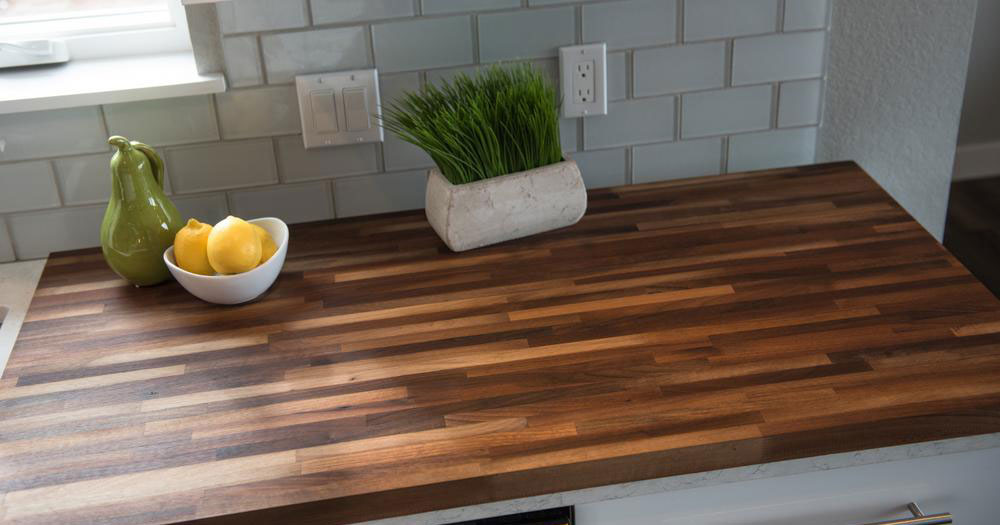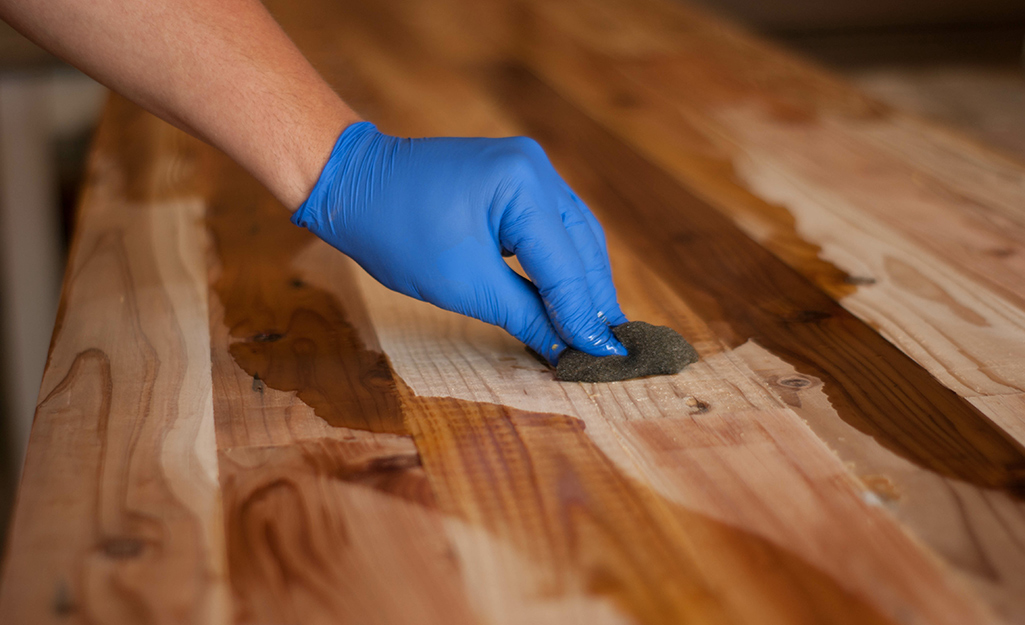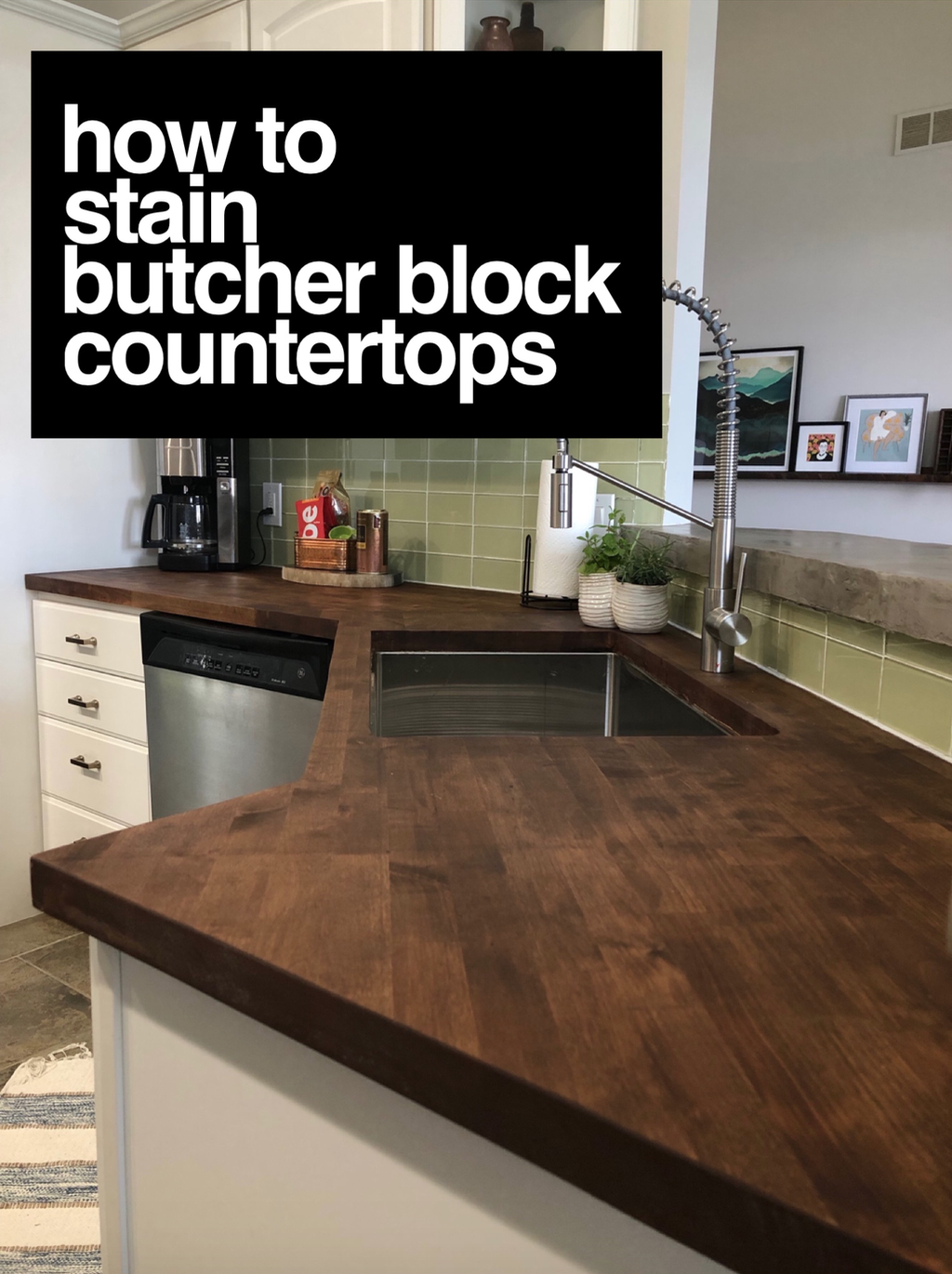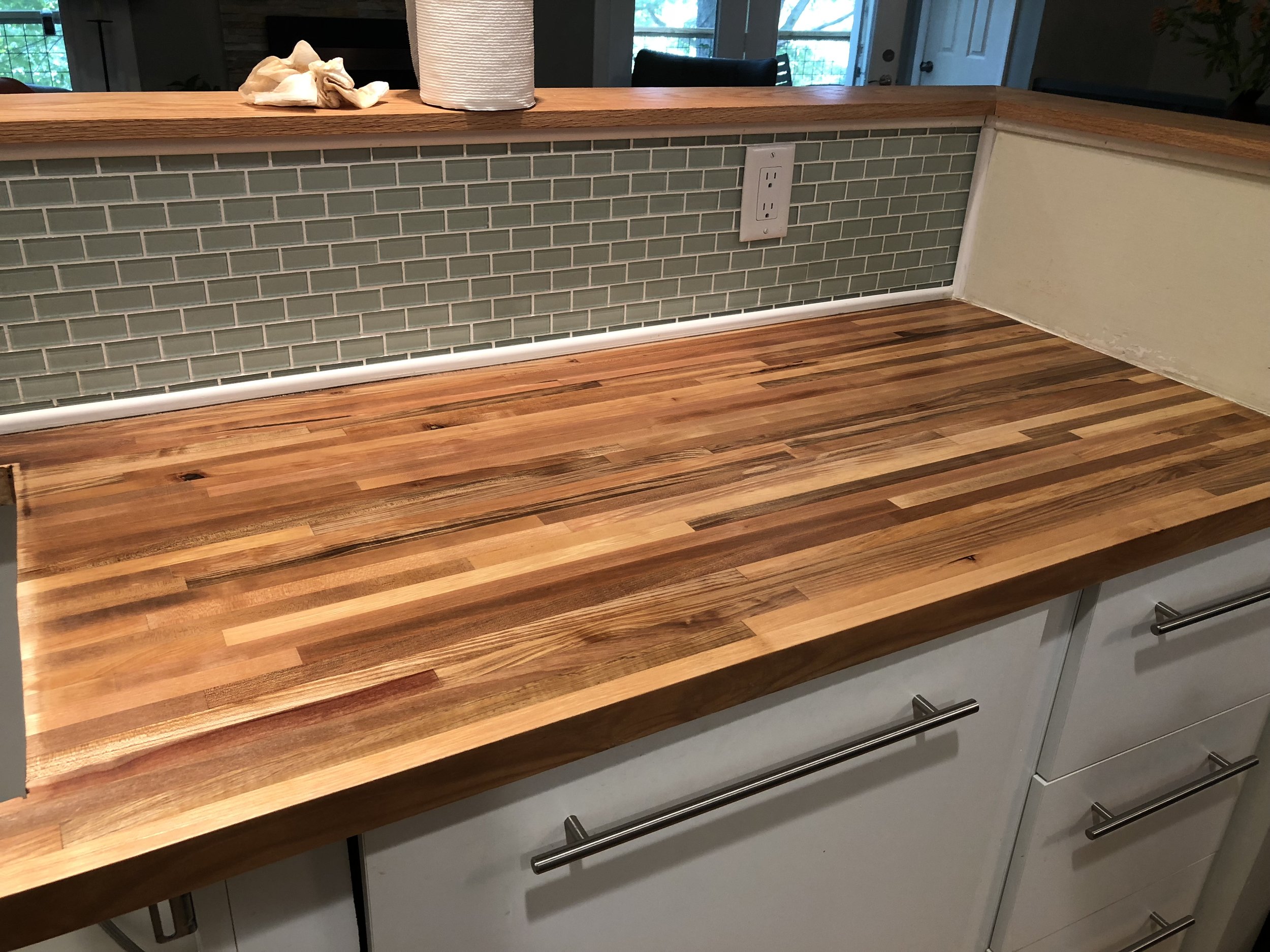Refinishing butcher block countertops is a satisfying and rewarding project that can bring new life to your kitchen. Butcher block, made from straight cuts of wood glued together into thick slabs, is prized for its durability, natural beauty, and warmth. Over time, however, daily use can leave it looking dull, scratched, or stained. Refinishing these surfaces can restore their original luster and extend their lifespan. The process involves several steps, including cleaning, sanding, sealing, and regular maintenance to keep your countertop looking its best for years to come.
The first step in refinishing your butcher block countertop is to thoroughly clean the surface. Start by removing all items from the countertop and wiping it down with a damp cloth to remove any loose debris. Next, use a mixture of mild dish soap and warm water to scrub the surface, paying special attention to any stained or greasy areas. If there are any persistent stains, you can use a paste made from baking soda and water to gently scrub them away. Once the countertop is clean, rinse it with clear water and dry it completely with a clean towel.
After cleaning, the next step is to sand the countertop. Sanding removes the top layer of the wood, eliminating scratches, stains, and any old finish. Start with a coarse-grit sandpaper, such as 80-grit, and sand the entire surface evenly. Be sure to follow the direction of the wood grain to avoid scratching the surface. After the initial sanding, switch to a medium-grit sandpaper, like 120-grit, to smooth out the surface. Finally, finish with a fine-grit sandpaper, such as 220-grit, to achieve a smooth, even finish. Use a vacuum or a tack cloth to remove all dust and debris between each sanding stage.
Once the sanding is complete, it’s time to apply a finish to protect the wood and enhance its appearance. There are several types of finishes to choose from, including oils, varnishes, and sealants. Mineral oil is a popular choice for butcher block countertops because it is food-safe, easy to apply, and enhances the natural beauty of the wood. To apply mineral oil, pour a generous amount onto the surface and spread it evenly with a clean cloth or sponge. Allow the oil to soak into the wood for several hours or overnight, then wipe off any excess with a clean cloth. Repeat this process two or three times to ensure the wood is well-saturated.

For a more durable finish, consider using a varnish or polyurethane. These finishes provide a hard, protective coating that is resistant to water and stains. To apply, use a high-quality brush or a lint-free cloth to spread a thin, even layer of varnish or polyurethane over the surface. Allow it to dry according to the manufacturer’s instructions, then lightly sand with a fine-grit sandpaper and wipe away any dust before applying a second coat. Repeat this process until you achieve the desired level of protection, usually two or three coats.
Maintaining your refinished butcher block countertop is essential to keep it looking its best. Regularly clean the surface with a damp cloth and mild soap, and avoid using harsh chemicals or abrasive cleaners that can damage the finish. It’s also important to keep the countertop dry to prevent water damage and warping. Wipe up spills immediately and use a cutting board to protect the surface from knife marks. Every few months, reapply a thin layer of mineral oil or other appropriate finish to keep the wood hydrated and protected.
In addition to regular cleaning and oiling, it’s important to protect your butcher block countertop from heat and moisture. Always use trivets or heat-resistant mats under hot pots and pans to prevent burns and scorch marks. Similarly, use coasters under glasses and mugs to avoid water rings and stains. If your countertop does get scratched or stained, you can spot-sand the affected area with fine-grit sandpaper and reapply the finish as needed.

Another aspect of maintaining your butcher block countertop is addressing any minor repairs that may arise. Over time, you might notice small cracks or splits in the wood, especially in dry climates. These can usually be repaired with wood filler or a mixture of sawdust and wood glue. Simply fill the crack, allow it to dry, then sand and refinish the area as needed. Regularly inspect your countertop for any signs of wear and tear, and address any issues promptly to prevent further damage.
Refinishing butcher block countertops can also provide an opportunity to change the appearance of your kitchen. If you’re looking for a new look, consider staining the wood before applying the finish. Wood stains come in a variety of colors and can enhance the natural grain of the wood or provide a completely different hue. To apply a stain, use a clean cloth or brush to spread it evenly over the surface, following the manufacturer’s instructions. Allow the stain to dry completely before applying the finish.
When refinishing butcher block countertops, it’s important to choose the right products and tools for the job. High-quality sandpaper, brushes, and finishes will ensure the best results and prolong the life of your countertop. Investing in a good orbital sander can also make the sanding process quicker and more efficient. Always follow the manufacturer’s instructions for any products you use, and take your time to ensure a thorough, even application.
Refinishing butcher block countertops is a manageable DIY project that can significantly improve the appearance and functionality of your kitchen. By following a few simple steps—cleaning, sanding, finishing, and maintaining—you can restore the beauty of your butcher block and enjoy its benefits for years to come. Regular maintenance and prompt repairs will keep your countertop looking its best and ensure it remains a focal point in your kitchen.
Common Mistakes to Avoid
One common mistake when refinishing butcher block countertops is not sanding the surface thoroughly. Inadequate sanding can leave scratches, stains, and uneven areas that will be visible after the finish is applied. Always start with a coarse-grit sandpaper and progress to finer grits, taking your time to ensure a smooth, even surface.
Another mistake is using the wrong type of finish. Some finishes, like certain varnishes and polyurethanes, are not food-safe and can pose health risks if used on a surface where food is prepared. Always choose a food-safe finish, such as mineral oil or a butcher block conditioner, to ensure the safety of your countertop.
Failing to remove all dust and debris before applying the finish is another common error. Dust particles can become trapped in the finish, creating a rough, uneven surface. Use a vacuum or tack cloth to thoroughly clean the surface between each sanding stage and before applying the finish.

Applying the finish too thickly or unevenly can also lead to problems. Thick coats can take a long time to dry and may result in a sticky, uneven surface. Apply thin, even coats, allowing each layer to dry completely before applying the next. Lightly sand between coats to ensure a smooth finish.
Neglecting regular maintenance can lead to premature wear and damage. It’s important to clean the surface regularly, reapply the finish as needed, and promptly address any scratches, stains, or cracks. Consistent care will keep your butcher block countertop looking beautiful and extend its lifespan.
Ignoring safety precautions is another common mistake. Sanding and finishing can generate dust and fumes, which can be harmful if inhaled. Always work in a well-ventilated area, wear a dust mask and safety glasses, and follow the manufacturer’s safety instructions for any products you use.
Finally, rushing the process can result in subpar results. Refinishing butcher block countertops requires patience and attention to detail. Take your time with each step, and don’t rush the drying times for the finishes. Properly completed, your refinished countertop will be a source of pride and enjoyment in your kitchen.

How often should I refinish my butcher block countertop?
The frequency of refinishing your butcher block countertop depends on how heavily it is used. In general, it’s a good idea to sand and refinish the surface every few years to maintain its appearance and protect the wood. However, regular maintenance, such as cleaning and oiling, should be done more frequently. If you notice deep scratches, stains, or a dull finish, it may be time for a more thorough refinishing.
What type of oil should I use on my butcher block countertop?
Mineral oil is the most commonly recommended oil for butcher block countertops because it is food-safe, easy to apply, and enhances the natural beauty of the wood. You can also use a specialized butcher block conditioner, which often contains a blend of mineral oil and beeswax for added protection. Avoid using vegetable oils, as they can turn rancid and create unpleasant odors.
Can I use my butcher block countertop as a cutting board?
While butcher block countertops are durable and can withstand cutting, it’s best to use a separate cutting board to protect the surface. Regular cutting directly on the countertop can create deep scratches and knife marks, which can harbor bacteria and be difficult to remove. Using a cutting board will help maintain the appearance and hygiene of your butcher block countertop.
How do I remove stains from my butcher block countertop?
To remove stains from your butcher block countertop, start by scrubbing the area with a mixture of mild dish soap and warm water. For persistent stains, you can create a paste using baking soda and water, then gently scrub the stain with a soft cloth. If the stain is still visible, you may need to sand the area with fine-grit sandpaper and reapply the finish. Regular oiling can also help prevent stains from penetrating the wood.
Can I stain my butcher block countertop a different color?
Yes, you can stain your butcher block countertop a different color before applying the finish. Wood stains come in a variety of colors and can enhance the natural grain or provide a completely new look. To stain the countertop, sand the surface thoroughly, apply the stain with a clean cloth or brush, and allow it to dry completely before applying the finish. Always follow the manufacturer’s instructions for best results.
What should I do if my butcher block countertop develops cracks?
If your butcher block countertop develops cracks, you can repair them with wood filler or a mixture of sawdust and wood glue. Fill the crack with the filler, allow it to dry completely, then sand the area smooth and refinish as needed. Regularly inspecting your countertop and addressing minor repairs promptly can prevent larger issues and extend the life of your butcher block countertop.

How to Stain Butcher Block

Butcher Block Countertops Refinish

How to Stain Butcher Block Countertops u2014 The Decor Formula

Related articles:
- Pine Butcher Block Countertops
- Butcher Block Countertops Walnut
- Maple Butcher Block Countertops
- Care Of Butcher Block Countertop
- Butcher Block Countertops Maintenance
- Antique Butcher Block Countertops
- Butcher Block Countertop Sealing
- Wood Butcher Block Countertop
- Thick Butcher Block Countertop
- How To Finish A Butcher Block Countertop

